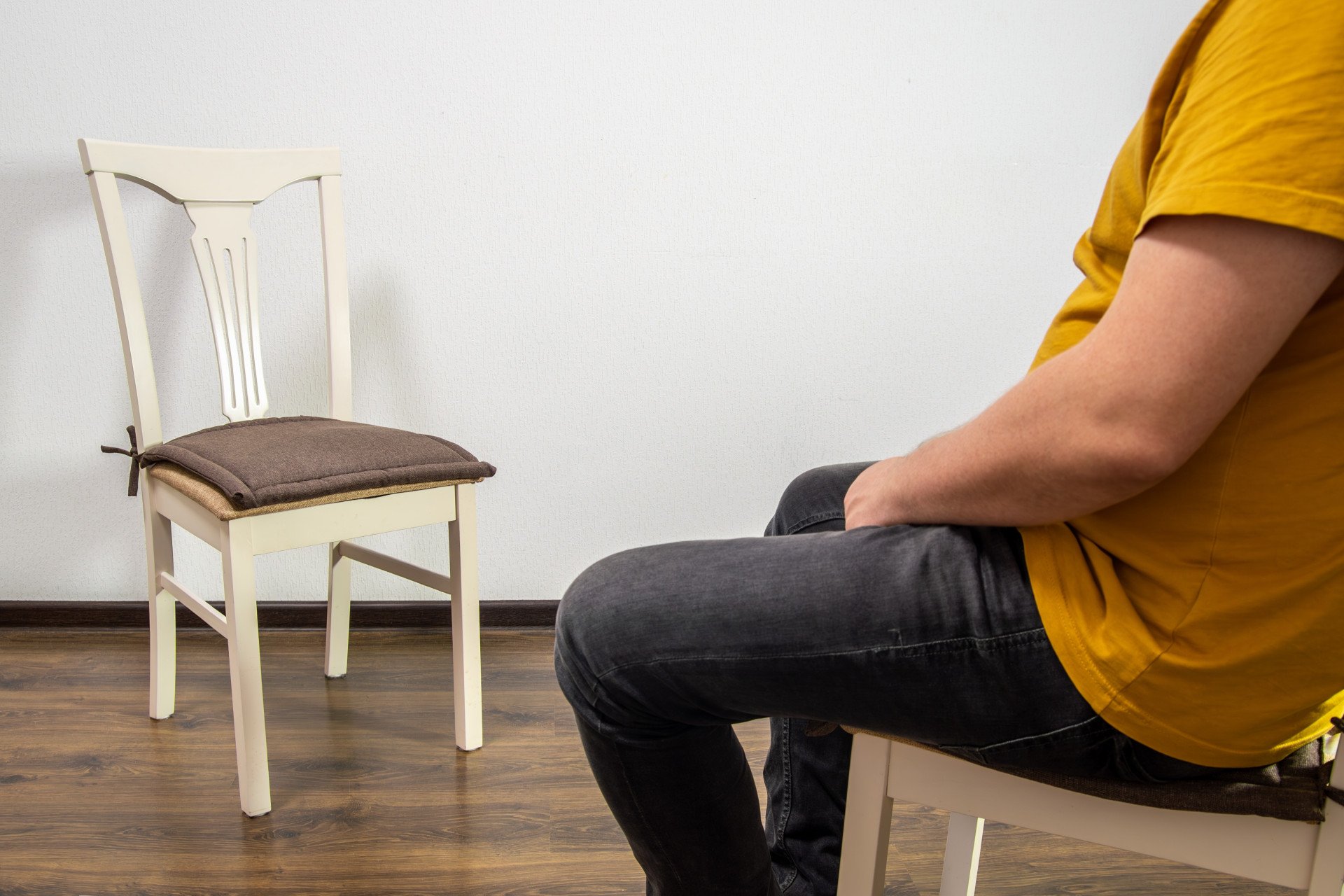Imagine sitting in a small room wearing a VR headset.
Across from you sits an eight-year-old boy – slouched shoulders, lowered gaze, thin voice. He looks like someone you used to know.
And then you realize: he’s you.
This was the emotional starting point for fourteen middle-aged South Korean men who took part in a novel experiment blending virtual reality (VR) and Gestalt therapy.
Researchers invited them to enter a virtual room, face a digital version of their childhood selves, and speak the words they’d always wished to hear.
For many, that meant addressing a father who never said “I’m proud of you,” or forgiving the boy who learned to stay silent.

Key Points
- A new study explored how middle-aged South Korean men reacted to a virtual reality version of the Gestalt empty-chair therapy.
- Participants spoke to a digital avatar of their younger selves, expressing emotions long suppressed.
- The experience helped many feel self-compassion and relief, replacing shame and self-blame with acceptance.
- VR offered a safer space for emotional openness, especially in cultures that discourage vulnerability.
- Some men found the technology distracting or too impersonal—showing that human connection still matters most.
Turning a classic therapy into a virtual encounter
The empty-chair technique – a pillar of Gestalt therapy – asks clients to imagine a person or a part of themselves sitting opposite them, and to speak aloud what has been left unsaid.
It’s powerful but also awkward, especially in cultures where men are taught that emotion equals weakness.
To bridge that discomfort, psychologists Kieun Yoo and Eunha Kim designed a virtual reality empty-chair (VREC) experience.
Instead of picturing someone in an empty chair, participants donned Meta Quest 2 headsets and faced a standardized 3-D child avatar, representing their younger selves.
Each man personalized the setting—perhaps a childhood bedroom or classroom – then began a conversation with his past self.
Afterward, they completed questionnaires on immersion and joined in-depth interviews.
Using Interpretative Phenomenological Analysis (a method that explores lived experience rather than numbers), the researchers traced emotional themes running through each man’s story.
Meeting the boy you once were
Many men described being “hit by a wave” of memory. The sight of the child—his smallness, his downcast eyes—brought back sensations buried for decades.
One participant said simply, “It felt like I was seeing my younger self all over again.”
Others felt surprise at their tenderness. They wanted to comfort the child, to say the things no one said then: You didn’t deserve that. You did your best. You made it through.
Several reported a spontaneous shift from self-criticism to self-compassion.
“During this conversation,” said one man, “I realized I’d been blaming myself all along. Saying ‘you didn’t do anything wrong’ out loud—it released something inside.”
These moments of release echo a paradox known in therapy: real change often begins with acceptance.
By acknowledging painful emotions rather than pushing them away, clients open space for healing.
Why virtual reality helped when words alone couldn’t
Participants said having a visible “person” to talk to made the dialogue feel real.
The headset also blocked the counselor’s gaze, letting them drop their social masks.
“It felt like just me and my childhood self,” one man explained. “I could finally speak freely.”
The immersive visuals—the child’s slouched posture, worn clothes – acted like emotional triggers, unlocking memories of punishment, shame, or loneliness.
For men conditioned to suppress feeling, this realism gave permission to care for themselves.
Still, technology had limits. Some found the avatar too generic or the controls distracting.
Others struggled because the digital child didn’t quite resemble them or couldn’t respond naturally.
“If it could look more like me or talk back,” one participant noted, “I think I’d connect even more.”
When culture meets code
The study’s cultural context matters deeply.
In South Korea, traditional masculinity prizes stoicism and self-control. Middle-aged men face high rates of depression and suicide yet rarely seek help, fearing stigma.
By offering a private, embodied space, VR softened these barriers.
It turned introspection into interaction—a dialogue that felt less like confession and more like connection.
For clinicians, this suggests that VR can make emotion-focused therapy feel safer, particularly in societies where vulnerability is shamed.
A mirror with pixels and compassion
Not every story ended neatly. Some participants found revisiting childhood pain unsettling.
A few felt detached, more fascinated by the gadget than their feelings. But overall, the study showed that technology can humanize when used thoughtfully.
As one counselor-participant put it, “I’ve asked clients to imagine this for years. Doing it in VR myself—I finally understood how real it can feel.”
The men’s average scores on the I-group Presence Questionnaire—around 4 out of 7 for presence, immersion, and realism—suggested a moderate sense of “being there.”
Even so, the emotional depth of their accounts hinted that realism isn’t everything.
Sometimes, it’s enough to believe the child in front of you deserves kindness.
Why it matters
For therapists, this research signals a new frontier in experiential work.
VR may serve as a bridge for clients who struggle to imagine or verbalize feelings, offering a visual scaffold for empathy and memory.
Clinicians could use it to ease emotional expression, especially in short-term or culturally sensitive settings.
For the public, the message is more personal: facing your younger self – whether in VR, imagination, or reflection can be profoundly healing.
The act of saying, “You did your best, and I forgive you,” isn’t science fiction. It’s a psychological technology older than any headset: compassion.
Reference
Yoo, K., & Kim, E. (2025). Qualitative study on the virtual reality-based empty-chair technique in middle-aged South Korean men. Frontiers in Psychology, 16, 1559171. https://doi.org/10.3389/fpsyg.2025.1559171


